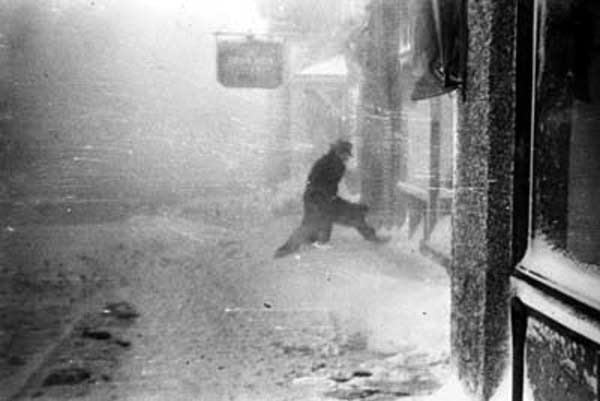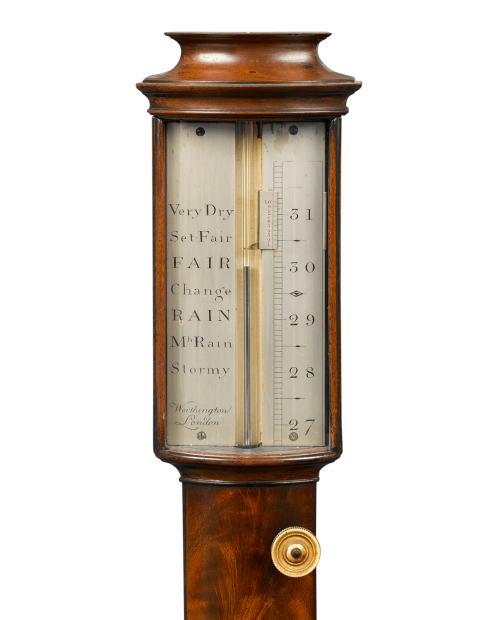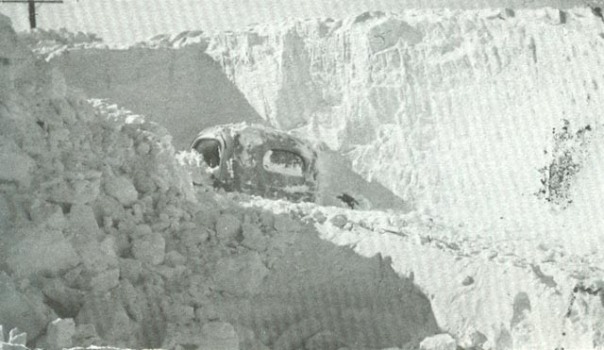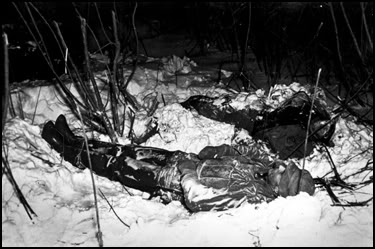
Dear Kids,
Did you get a day off of school this week for Veteran’s Day Well, I think you should. November 11 was chosen as the day each year that we all take time to honor veterans. In Europe it is called Armistice Day…we named it Veterans’ Day.
The ending of a World War is certainly an important date to remember, but Armistice Day here in Minnesota is also the anniversary of a very famous killer snow storm known forever as the Armistice Day Blizzard of 1940.
Let me tell you about this storm.
Weather reporting was very different in 1940 than it is today. There were no satellite images, radars, televisions or severe weather apps for smart phones. There weren’t even cell phones at all. Weather reporting depended on the human observation, teletype, radio, newspapers, public postings and word of mouth. Word of mouth, is God approved gossip.
While there were lots of weather records from the 1800’s, the information they contained was pretty much worthless for forecasting until computers. Prior to 1934 weather reports were generated twice a day (8 a.m and 8 p.m) by human observation and were telegraphed to regional offices. The regional office responsible for Minnesota and its neighboring states was in Chicago.
Many people in towns and cities received weather reports on their radios, in daily newspapers, and public postings, but farm folks often did not have access to updated storm reports. Telephone operators and mailmen did their best to help keep their rural neighbors informed, but it was a pretty imperfect system.
The national weather service improved its weather reporting with a major update in 1934. A “breakfast” forecast was introduced in 1938, and weather reports were shared four times a day. (4 a.m; 10 a.m; 4 p.m.; and 10 p.m.) In 1940, five-day forecasting was introduced. These twice a week reports were based on air pressure readings and climate history.
What is an air pressure reading? Air pressure is exactly what it sounds like. It is the weight of the air pressing down from above. High pressure readings usually indicate good weather, while low readings warn that storms are on the way.
To find out what the air pressure is, you must use a barometer. A barometer can look a lot like an outdoor thermometer, the kind you hang on a wall, not like the one your mother sticks up your baby’s sisters butt. However, what barometers and thermometers have in common is the use of mercury. While a thermometer, measures temperature, the central column in the middle of a barometer’s pool of mercury rises or lowers depending air pressure.

Barometric pressure readings are best at short-term weather predictions of usually a day or two. Typically, this is how a barometer works. When the mercury in a barometer falls, it is time to look out for stormy weather. The lower the air pressure, the worse the storm. When the mercury rises, good weather is on the way.
This past summer you probably heard about several Hurricanes and how they use planes to punch through the storms devastating winds to get air pressure readings from the calm middle of the storm or the eye. When a hurricane grows stronger, the air pressure drops. A normal barometer reading at sea level on a nice calm sunny day would read about 29.53 inches. One of the lowest recorded barometric pressures for a hurricane was for Gilbert in 1988 at just over 26 inches.
The Armistice Day Blizzard’s barometric pressure on November 10, as the storm approached Minnesota, was about 27.40 inches. This storm was almost as strong as some of the worst hurricanes to hit our nation. It is worth noting, and sad to report, that as this killer storm raced towards our state, on November 11, no one in the Chicago weather office was watching the storm’s rapid development. After the storm was over, a retired government weatherman reported that there was no overnight staffing, and, therefore very few, if any, warnings were issued.
The story of Minnesota’s killer blizzard actually begins on the western coast of the United States. The pacific northwest to be exact. When this storm came ashore some of its wind gusts were near hurricane-force. In fact, the storm was so strong that it destroyed the world’s third longest expansion bridge, the Tacoma Narrows Bridge located in the state of Washington. At that time, the bridge, nicknamed “Galloping Gertie”, was regarded as an engineering marvel.
The bridge gained its nickname because a four-mile an hour breeze would make it jump about like a cat on catnip. Oddly, enough, though the bridge was always very stable in higher winds. Until the gale of November 7, 1940. The 35 to 45 mile per hour winds caused the middle section of the bridge to buck up and down about 3 to 5 feet. The bridge collapsed before the entire storm even reached the shore.
The storm moved on land on November 8. Where it lashed Washington state with gale force winds as the barometer readings continued to fall.
Most storms weaken when they cross a mountain range, but not this one. As the storm moved over the Rocky mountains on November 10, it rapidly intensified over Colorado. Then, it swiftly moved east and swung north. Within six hours the center of the storm reached Iowa, almost 825 miles! West of the storm’s center were ice storms and blizzards, in front of it to the east were severe thunderstorms and tornadoes.
The day the killer blizzard struck Minnesota began unseasonably warm and sunny. By mid-afternoon the temperatures had climbed to a warm 60 degrees. People had left home that morning dressed lightly to enjoy the beautiful fall weather….especially duck hunters.
It was the perfect day to go duck hunting. Not only was the weather beautiful, but there were so very many more ducks that usual. Hunters could not believe their eyes and luck as never-ending huge flocks of ducks were flying in low. The ducks knew what the hunters did not, there was an awful storm coming and they were escaping to safety, unlike many of the poor hunters.
As the winds of the impending storm grew stronger, temperatures rapidly dropped. Soon, it began to rain, rain turned to sleet and sleet to snow. Within a few short hours the beautiful day had turned into a nightmare of a monstrous killer blizzard.
Even after the storm began in earnest, cold wet hunters refused to leave their duck blinds and boats, because it was the most ducks and best hunting they had every seen, and there had been no warning of a major storm, so they thought it wouldn’t be too bad. It wasn’t long before people caught outside in the storm found themselves cold, wet and in trouble. Especially the duck hunters.
The blizzard lasted well into the next day, November 12. Temperatures dropped from about 60 degrees in the morning, to 55 degrees below zero during the night. The fury of the storm caused zero visibility and wind gusts between 50 to 80 miles per hour. To get an idea of how powerful of a storm this was, it is important to note that a Category I hurricane has sustained winds of 74 miles per hour.
The blizzard blanketed the ground with well over two-feet of snow in some places. The wild winds whipped the snow into drifts up to 20 feet high. Roads and highways closed. People quickly became stranded and trapped. Especially the duck hunters.

Your great-great Uncle Vensel was out duck hunting that day when he got caught in the storm. Soaking wet and almost frozen he barely made it home. Even so, he became so sick that his family claimed his health never recovered. Still, Vensel was one of the lucky ones….he made it home.
Many duck hunters both young and old alike were caught unprepared. Some of the hunters, tried to take shelter on small Mississippi River islands. Under-dressed for winter weather, many froze to death in their duck blinds and boats. Others decided to try to reach shore. To do so they had to battle waves up to 15 feet high in the shallow river channels and marshy sloughs. Duck boats were swamped by the high waves and hunters drowned.
Of the 49 people from Minnesota who died in the storm, almost half were duck hunters. The City of Winona, turned its city garage into a morgue, where the frozen bodies of the doomed hunters were collected, thawed-out and identified.

Yes, this is a picture of real dead duck hunters bodies, but with all the violent crap you kids watch on television and in video games, I am not having any of it that this is….too scary.
Rescuers had to use long poles to find missing cars in the over twenty-foot snow drifts. It took days and in some instances almost a month to reopen roads. It wasn’t just the roads that were impassable. Passenger trains also were stuck in the snow.
For many people who lived in rural areas, communication with the outside world was completely cut off. Newspapers and mail deliveries were impossible on snow blocked roads and telephone and power lines were down. Many homes, barns, and outbuildings had been damaged by the ice, snow and high winds.
In total, the storm killed 149 people. In addition to the hunters, people that were stranded in their cars also perished. In the City of Watkins, Minnesota, two trains crashed together during the blinding blizzard killing two people. Over 60 sailors lost their lives in Lake Michigan when the freighters SS Anna C. Minch, SS Novadoc and the SS William B. Davock, along with two smaller boats sank. Wisconsin had 13 people die, Illinois another 13 and Michigan had four souls perish. In addition to the loss of human life, thousands of cows died and over 1.5 million turkeys.
It seems that no matter how bad the crisis there always seem to be people who put the welfare of others before their own. Max Conrad and John R. “Bob” Bean, both pilots, from Winona are good examples. As soon as the storm was over, these two guys flew up and down the Mississippi river valley locating hunters who had managed to survive the storm and dropping life-saving supplies to them. Both of these men were honored for the heroism.
For a few days after the storm ended, search parties recovered the dead hunters and other victims of the storm. Some of those stranded on islands did manage to survive the storm. One hunter spent the entire night walking in circles to prevent freezing to death. Others, who were lucky enough to survive, lost their hands or feet from severe frost bite.
People in Minnesota are used to bad winter storms and this storm was not going to beat them. Big cats were used to help clear many of the roads…big Caterpillar bulldozers.
Not only do our people know how to survive bad weather, so do our cats! Well, at least those who live by caves. After the storm was over cats seemed to getting very fat. Soon it was discovered that the felines were feasting on the thousands of frozen dead bats who had become lost in the storm and died before they could find the opening to their caves.
As the “winds of hell” raged the night of the storm, a young pianist from Milwaukee, Wisconsin, was performing in concert at the College of St. Teresa, in Winona. The winds howled so loudly outside the concert hall that the young man’s beautiful music became difficult to hear. Eventually, the young musician realized that the storm was something extraordinary and began to leave the stage. The audience pleaded with him to stay. Which he did. He dedicated his next song, titled “The Night Winds” to the storm. The young musician survived the killer blizzard and became so famous that he would be known by just his last name…..Liberace. A very cool cat!

I think, I might get you youngsters weather stations for Christmas. I believe that every child should have a barometer, weather radio, very warm coat, dry boots, thick hat and mittens. And, that every mother should have a butt thermometer!!
Lots of love, hugs and kisses!
Grandma Pat
